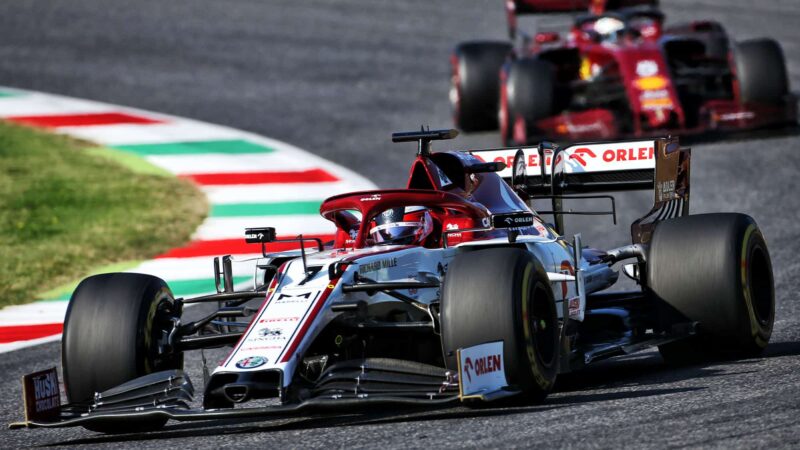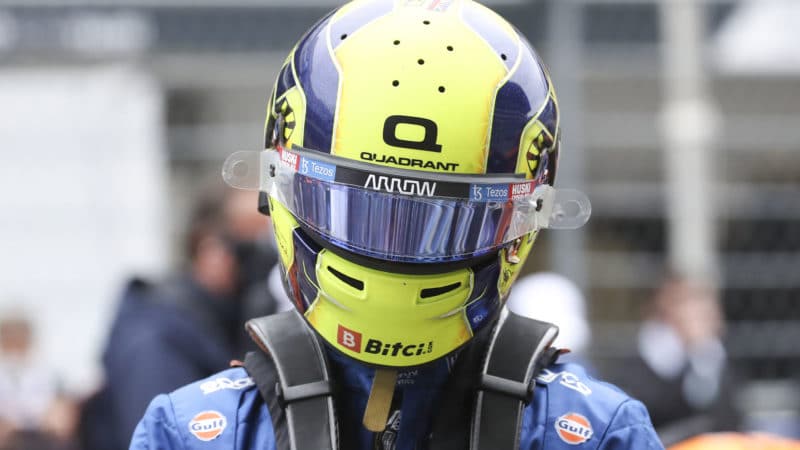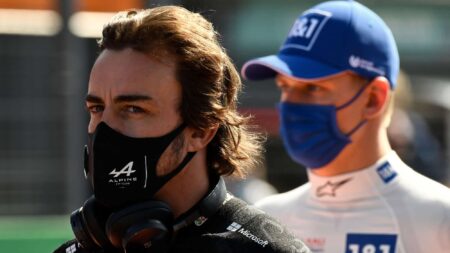In Räikkönen’s case, he simply reacted to the safety car being deployed for an incident and dived into the pit lane after passing the entry point he should have used. It was to gain an advantage despite being beyond where the rules say he must enter the pits.
When you look at what happened with Norris, he had always intended to pit on that lap, had arguably been a danger to other cars when trying to keep his car out of the barriers on slick tyres as rain fell heavily, and he entered the pit lane at the right point. The issue was, the conditions were so bad he slid wide again at very low speed and ended up outside the pit entry, before returning to the pit lane.
Running wide lost Norris even more time, so he clearly wasn’t trying to gain an advantage – unlike Räikkönen – and the rule doesn’t address when a driver has already entered the pit lane at the correct point before ending up outside of it. What was he supposed to do, drive another lap in even worse conditions and very likely have or cause an accident? That’s where common sense was applied, because in that case the driver shouldn’t be penalised for doing the right thing. The stewards used common sense to work out if anything Norris did required a penalty – such as if he had taken the corner at a higher speed than normal to try and gain time and risked crossing the line – and decided it didn’t.
But it provoked Alonso’s comments, and the Alfa Romeo ones, and then in Austin there were similar ones from Alonso due to an incident with, err, an Alfa Romeo.

Räikkonen was penalised last year for also crossing the pitlane entry line
Grand Prix Photo
When Räikkönen tried to overtake Alonso around the outside of Turn 1, the Spaniard had to leave space because the Finn was fully alongside. But he didn’t and ran Räikkönen out beyond the edge of the track. Räikkönen attempted to stay within the lines – the pair touching as a result – and then held the inside for Turn 2 where he completed the move.
Alpine’s protests were that Räikkönen overtook Alonso off the track, when in reality Alonso forced Räikkönen off the track and the Finn overtook him anyway one corner later despite losing time.




